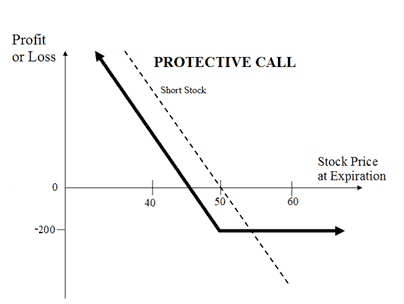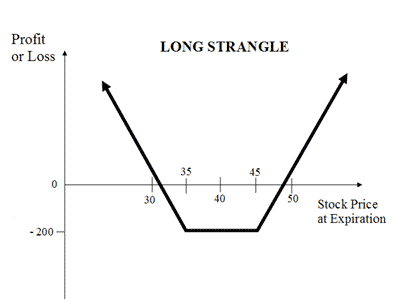 Zerodha (Trading & Demat Account)
Zerodha (Trading & Demat Account)
FREE Equity Delivery and MF
Flat ₹20/trade Intra-day/F&O
 Zerodha (Trading & Demat Account)
Zerodha (Trading & Demat Account)
FREE Equity Delivery and MF
Flat ₹20/trade Intra-day/F&O

|
|
Compare Protective Call (Synthetic Long Put) and Long Strangle (Buy Strangle) options trading strategies. Find similarities and differences between Protective Call (Synthetic Long Put) and Long Strangle (Buy Strangle) strategies. Find the best options trading strategy for your trading needs.
| Protective Call (Synthetic Long Put) | Long Strangle (Buy Strangle) | |
|---|---|---|
 |
 |
|
| About Strategy | The Protective Call strategy is a hedging strategy. In this strategy, a trader shorts position in the underlying asset (sell shares or sell futures) and buys an ATM Call Option to cover against the rise in the price of the underlying. This strategy is opposite of the Synthetic Call strategy. It is used when the trader is bearish on the underlying asset and would like to protect 'rise in the price' of the underlying asset. The risk is limited in the strategy while the rewards are unlimited. How to use a Protective Call trading strategy? The usual Protective Call Strategy looks like as below for State Bank of India (SBI) Shares which are currently traded at Rs 275 (SBI Spot Price): Protective Call Orders - SBI Stock Orde... Read More | The Long Strangle (or Buy Strangle or Option Strangle) is a neutral strategy wherein Slightly OTM Put Options and Slightly OTM Call are bought simultaneously with same underlying asset and expiry date. This strategy can be used when the trader expects that the underlying stock will experience significant volatility in the near term. It is a limited risk and unlimited reward strategy. The maximum loss is the net premium paid while maximum profit is achieved when the underlying moves either significantly upwards or downwards at expiration. The usual Long Strangle Strategy looks like as below for NIFTY current index value at 10400 (NIFTY Spot Price): Options Strangle Orders OrdersNIFTY Strike Price Buy 1 Slightly OTM PutN... Read More |
| Market View | Bearish | Neutral |
| Strategy Level | Beginners | Beginners |
| Options Type | Call + Underlying | Call + Put |
| Number of Positions | 2 | 2 |
| Risk Profile | Limited | Limited |
| Reward Profile | Unlimited | Unlimited |
| Breakeven Point | Underlying Price - Call Premium | two break-even points |
| Protective Call (Synthetic Long Put) | Long Strangle (Buy Strangle) | |
|---|---|---|
| When to use? | The Protective Call option strategy is used when you are bearish in market view and want to short shares to benefit from it. The strategy minimizes your risk in the event of prime movements going against your expectations. |
A Long Strangle is meant for special scenarios where you foresee a lot of volatility in the market due to election results, budget, policy change, annual result announcements etc. |
| Market View | Bearish When you are bearish on the underlying but want to protect the upside. |
Neutral When you are unsure of the direction of the underlying but expecting high volatility in it. |
| Action |
|
Suppose Nifty is currently at 10400 and you expect the price to move sharply but are unsure about the direction. In such a scenario, you can execute long strangle strategy by buying Nifty at 10600 and at 10800. The net premium paid will be your maximum loss while the profit will depend on how high or low the index moves. |
| Breakeven Point | Underlying Price - Call Premium When the price of the underlying is equal to the total of the sale price of the underlying and premium paid. |
two break-even points A Options Strangle strategy has two break-even points. Lower Breakeven Point = Strike Price of Put - Net Premium Upper Breakeven Point = Strike Price of Call + Net Premium |
| Protective Call (Synthetic Long Put) | Long Strangle (Buy Strangle) | |
|---|---|---|
| Risks | Limited The maximum loss is limited to the premium paid for buying the Call option. It occurs when the price of the underlying is less than the strike price of Call Option. Maximum Loss = Call Strike Price - Sale Price of Underlying + Premium Paid |
Limited Max Loss = Net Premium Paid The maximum loss is limited to the net premium paid in the long strangle strategy. It occurs when the price of the underlying is trading between the strike price of Options. |
| Rewards | Unlimited The maximum profit is unlimited in this strategy. The profit is dependent on the sale price of the underlying. Profit = Sale Price of Underlying - Price of Underlying - Premium Paid |
Unlimited Maximum profit is achieved when the underlying moves significantly up and down at expiration. Profit = Price of Underlying - Strike Price of Long Call - Net Premium Paid Or Profit = Strike Price of Long Put - Price of Underlying - Net Premium Paid |
| Maximum Profit Scenario | Underlying goes down and Option not exercised |
One Option exercised |
| Maximum Loss Scenario | Underlying goes down and Option exercised |
Both Option not exercised |
| Protective Call (Synthetic Long Put) | Long Strangle (Buy Strangle) | |
|---|---|---|
| Advantages | Minimizes the risk when entering into a short position while keeping the profit potential limited. |
|
| Disadvantage | Premium paid for Call Option may eat into your profits. |
The strategy requires significant price movements in the underlying to gain profits. |
| Simillar Strategies | Long Put | Long Straddle, Short Strangle |

Add a public comment...

FREE Intraday Trading (Eq, F&O)
Flat ₹20 Per Trade in F&O
|
|